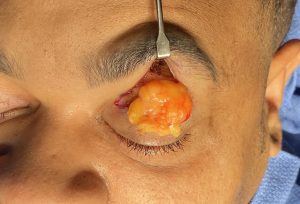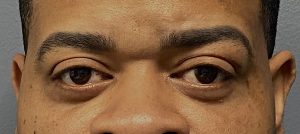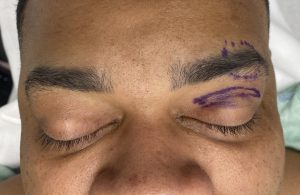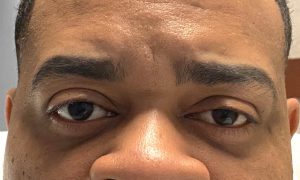Background: While bone fractures is the most recognized type of facial injury, it is actually not the most common. Blunt soft tissue injuries are the most frequent occurrence over even lacerations. Such blunt trauma cause compression of the soft tissues between the externally applied force and the underlying solid bone. If the force is great enough it will of course cause the bone to fracture. But lesser forces cause the intervening soft tissues to sustain cellular, blood and lymphatic vessel ruptures resulting in bruising and edema.
While swelling and ecchymoses eventually clear as tissue repair ensues there is often soft tissue thickness loss. Fat cells in particular die and are replaced by scar tissue. This can create an external contour depression and scar adhesions to the bone. These may or may not cause some mild discomfort. Any dynamic structures near the adhesed area may be affected in their movements.
Treatment of such facial areas with soft tissue contour depressions and adhesions is typically done by release and fat grafting, usually by an injection technique. The addition of soft tissue is an important component of the treatment since new tissue needs to the introduced for both prevention of adhesion recurrence as well as to improve the external contour. While a fat injection technique is the most common method of tissue addition there is also a role for composite or en bloc fat grafting.
Case Study: This male has an asymmetry of the left eyebrow and upper eyelid. He had a prior history of blunt trauma to the left periorbital area which resulted in the asymmetry thereafter. The left eyebrow area was flatter with a lower eyebrow position. It also had some chronic discomfort. The left upper eyelid had a 1 to 2mm ptosis.


While most facial soft tissue depressions are treated by fillers or fat injections there is a role for the ‘old style’ solid fat graft. With the need for an adjacent incision anyway and the convenient use of a nearby excisional fat harvest site (buccal fat pad) the placement of a solid fat graft offers the optimal soft tissue release and interpositional graft.
Key Points:
1) Blunt trauma to the face is well known to cause painful adhesions that may or may also be associated with soft tissue contour depressions.
2) Trauma to the upper eyelid can cause elevator dehiscence and upper lid ptosis.
3) Adhesion release with interpositional fat grafting can improve its discomfort as well as the overlying soft tissue contour.
Dr. Barry Eppley
World-Renowned Plastic Surgeon




